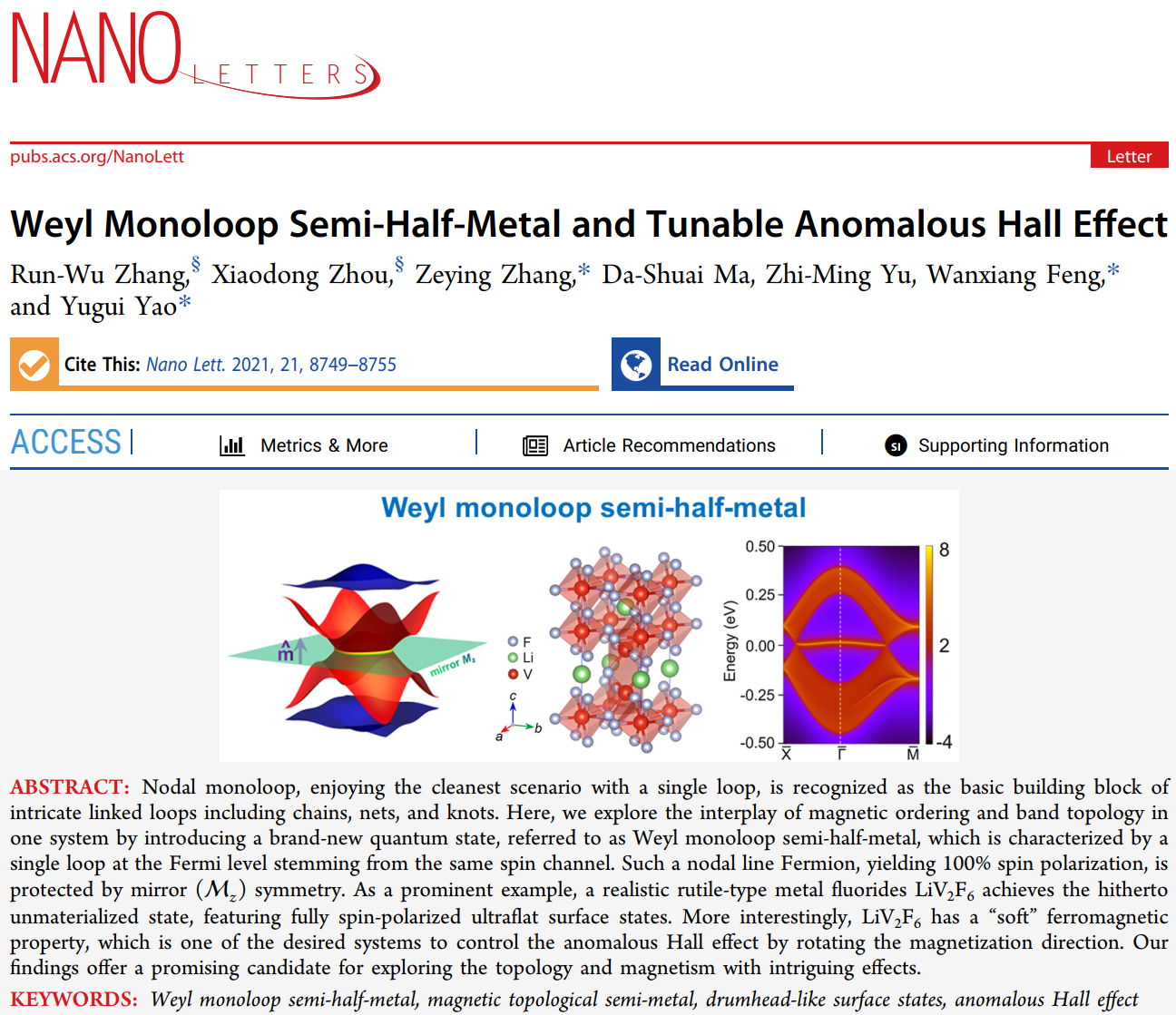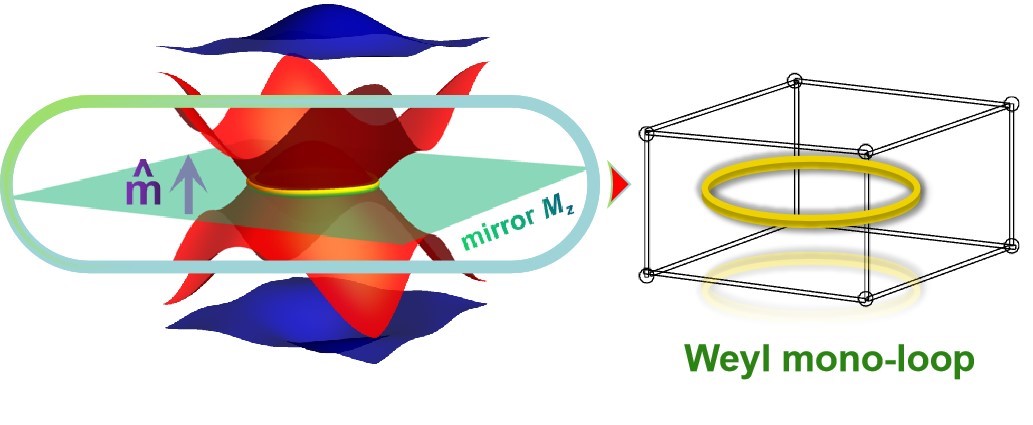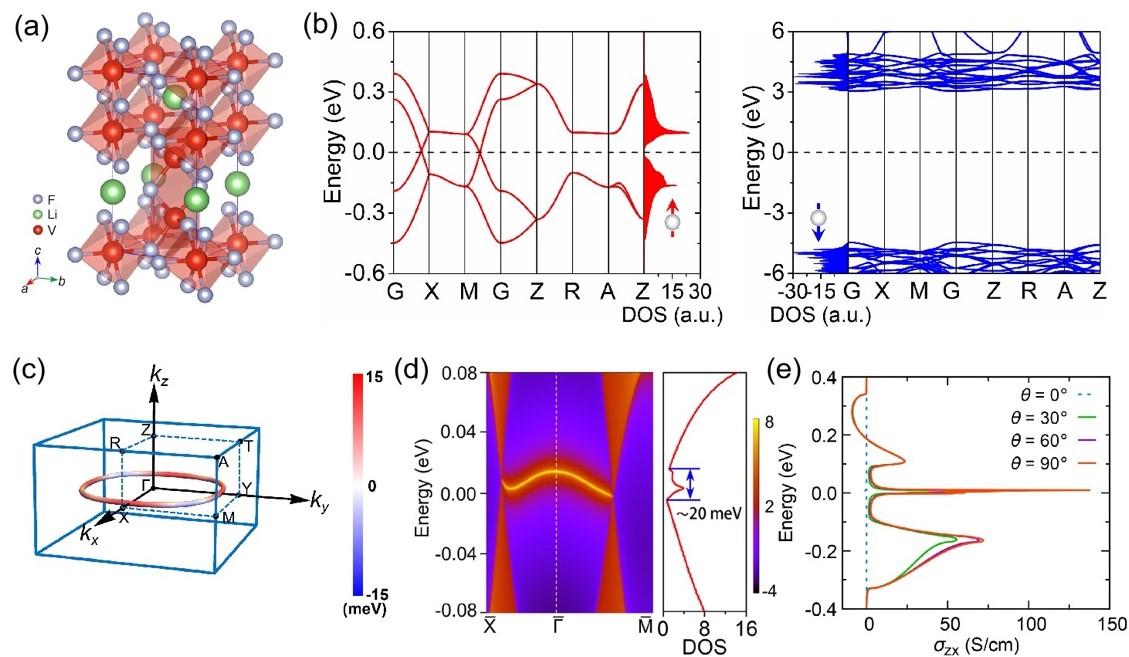Professor Yao’s group at the School of Physics, Beijing Institute of Technology has made important progress in has made important progress i
来源: 作者: 发布时间:2022-10-13
In recent years, Professor Yao’s research team and collaborators at the School of Physics, Beijing Institute of Technology have made a series of important progress in the study of novel magnetic topological quantum states and their physical properties. For example, topological magneto-optical effects and their quantization were proposed for the first time [Nat. Commun., 11, 118 (2020)]. A new topological quantum state is predicted: spin gapless nodal-line semi-metal [Phys. Rev. Lett., 124, 016402(2020)]; For the first time, two-dimensional Weyl “nodal line” semi-metal was observed in ferromagnetic monolayer GdAg2 [Phys. Rev. Lett., 123, 116401 (2019)]. The magnetization direction controlled nodal-line and Weyl phase [Phys. Rev. B, 98, 121103(R) (2018)] and the concept of composite nodal-point-line Weyl semi-metal [J. Phys. Chem. Lett. 10(10), 2508 (2019)] have been proposed. In addition, they further explored high-quality magnetic topological candidates, such as the spin gapless nodal-line and nodal-surface semi-metal CaFeO3 [Phys. Rev. B, 103, 195115 (2021), Editor's Suggestion], two-dimensional magnetic valley semiconductor materials and found the sign-reversible valley-dependent Berry phase effects [NPJ Comput. Mater., (2021), 7:160], spin polarized nodal-line semi-metal in 2D alkali metal chalcogenides [J. Phys. Chem. Lett. 10(11), 3101 (2019)] et al. These works have attracted extensive attention.
Recently, Professor Yao’s team at Beijing Institute of Technology has made further progress in the study of new magnetic topological semi-half-metals. Based on the effective model analysis and first-principles calculations, they predicted the simplest Weyl semi-half-metal with a single nodal ring in the soft ferromagnetic material LiV2F6, namely the Weyl monoloop semi-half-metal. The results were recently published in Nano Letters 21, 8749-8755 (2021).
At present, the discovered Weyl nodes or nodal lines in topological semi-metals are mostly far away from the Fermi level, which makes it difficult to observe the novel properties they should have experimentally. Therefore, it is still an urgent problem to find the ideal magnetic topological semi-metals with the energy band nodes or nodal lines at the Fermi level. On the other hand, magnetic half-metals with spin polarization of 100% are widely used in the field of spintronics. Combining the advantages of half-metal and semi-metal, i.e., the magnetic topological semi-half-metal with 100% spin polarization and the band crossing at Fermi level, is the key to solve the problem. The interaction between topological order and magnetic order can generate novel physical effects (such as quantum anomalous Hall effect and anomalous Nernst effect), which will have great application value in the field of information technology in the future. Therefore, the exploration of high performance magnetic topological semi-half-metals and their physical properties has become the focus of attention in the condensed matter physics.

FIG. 1. Schematic diagram of 3D band structure of nodal line semi-half-metal. Red color is the spin up channel, blue color is the spin down channel. Yellow color represents nodal line state. Green color is the mirror parallel to the z-axis.
Yao et al. first classified the nodal line states of ferromagnetic systems: one is the nodal line formed by opposite spin channels, and the other one is the nodal line formed by the same spin channel (Fig. 1). Strictly speaking, the former is a ferromagnetic metal and the latter is a ferromagnetic half-metal. It is worth noted that if the latter forms a nodal line state at the Fermi level, then it should be called topological semi-half-metal. The nodal line fermions have 100% spin polarization and are expected to be very important in the field of spintronics. As shown in Fig. 2, based on effective model analysis and first-principles calculations, a “soft ferromagnetic” material LiV2F6 was predicted to have ultra-clean band dispersion, the simplest nodal line form, and ultra-flat drumhead-like surface state, which is likely to provide an ideal research platform for related spin physics. The ferromagnetic material LiV2F6 has the lowest energy along the [001] direction by calculating the magnetic anisotropy energy, and the monoloop of topological nodal line is protected by Mz mirror symmetry. These two conditions exist together even after the spin-orbit coupling is considered, thus resulting in a realistic Weyl monoloop that exists with spin-orbit coupling. Because the “soft ferromagnetic” LiV2F6 has a small magnetic anisotropy energy, the orientation of magnetic moment can be easily altered by the external magnetic field and the anomalous Hall effect of in-plane magnetization can be realized. This work lays a theoretical foundation for further applications of topological spintronic devices with high efficiency, low consumption, and high integration.

FIG. 2. (a) Crystal structure of LiV2F6; (b) The spin polarization band structure and density of states of LiV2F6. (c) 3D nodal ring at kz = 0; (d) The surface dispersion and density of states for the [001] plane of LiV2F6. (e) The intrinsic anomalous Hall conductivity at polar angles θ = 0°, 30°, 60° and 90°.
This work was supported by the National Key R&D Program of China, the National Natural Science Foundation of China, the Strategic Priority Research Program of Chinese Academy of Sciences, and the Project Funded by China Postdoctoral Science Foundation. The first affiliation of this work is the Beijing Institute of Technology. Professors Wanxiang Feng and Yugui Yao from the School of Physics, Beijing Institute of Technology, and Dr. Zeying Zhang from the College of Mathematics and Physics, Beijing University of Chemical Technology (a doctoral student of Yao’ group graduated in 2019), are the co-corresponding authors of this work. Postdoc Run-Wu Zhang and doctoral student Xiaodong Zhou are co-first authors. This work was published in Nano Letters (IF: 11.189).
Run-Wu Zhang,† Xiaodong Zhou,† Zeying Zhang*, Da-Shuai Ma, Zhi-Ming Yu, Wanxiang Feng*, and Yugui Yao*; “Weyl Mono-loop Semi-half-metal and Tunable Anomalous Hall Effect”, Nano Letters, 21, 8749-8755 (2021). († Co-first authors, * Co-corresponding authors)




